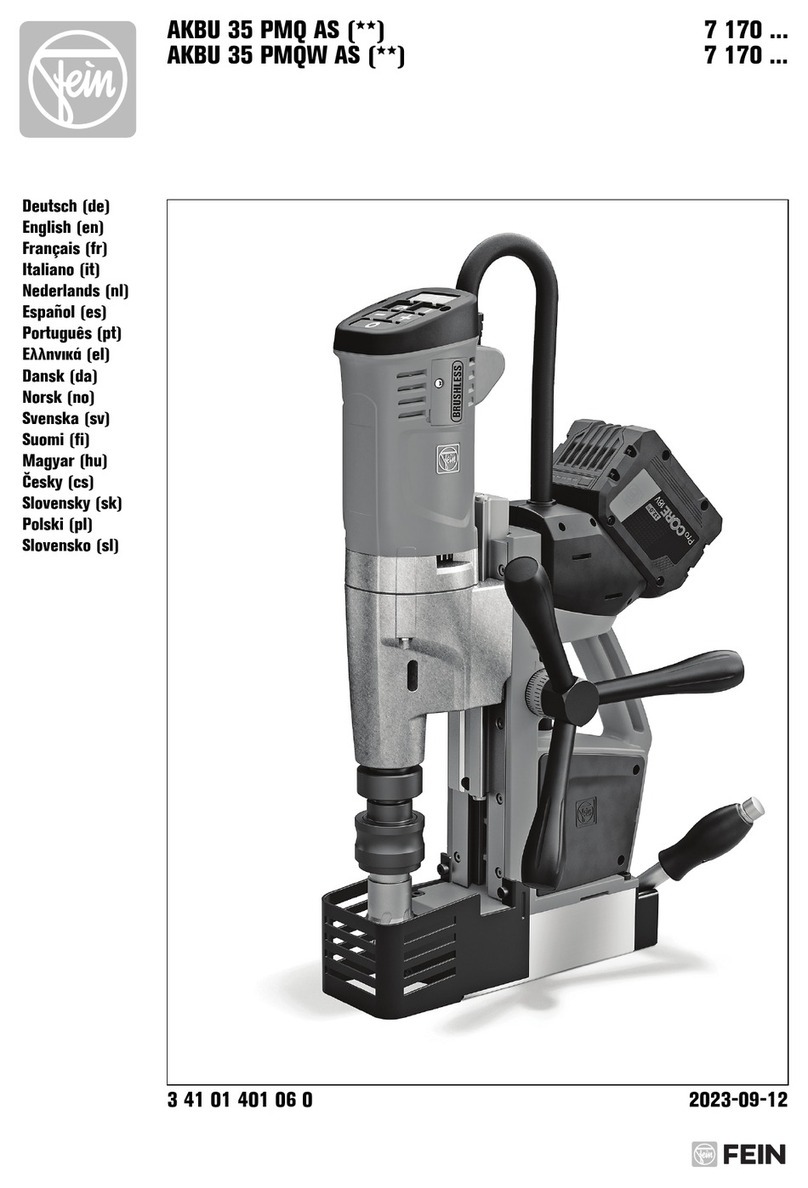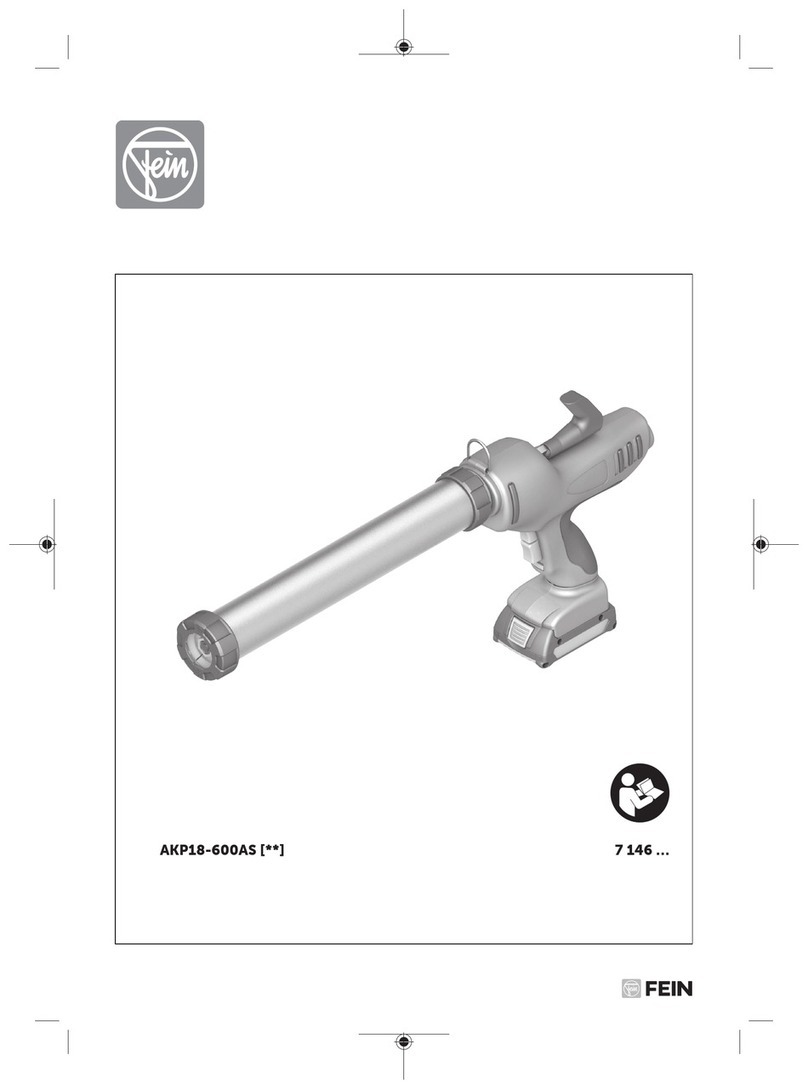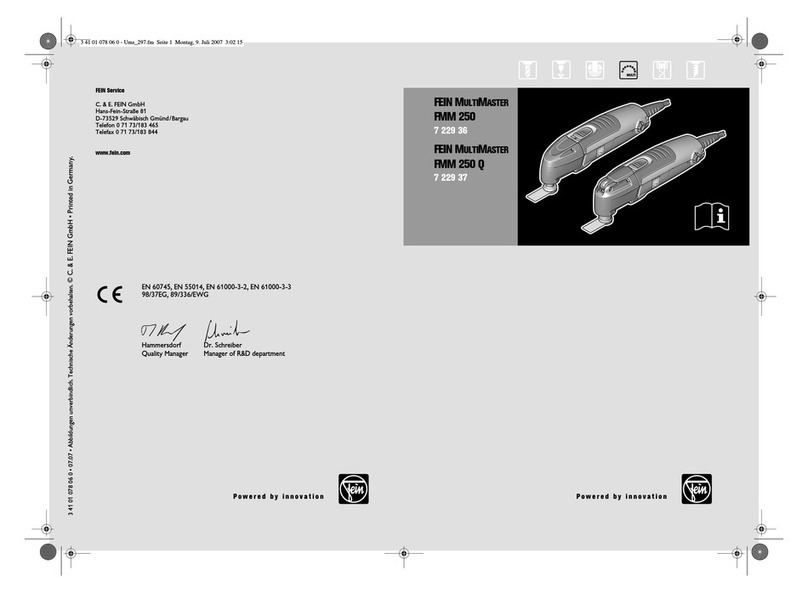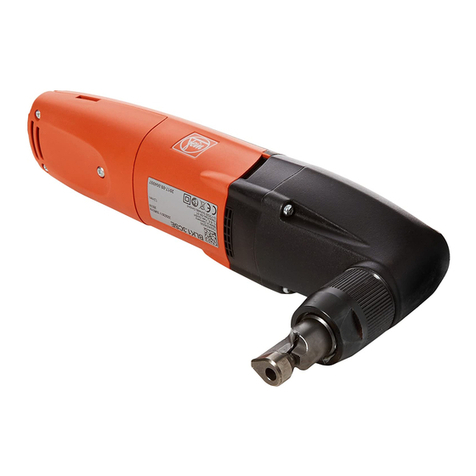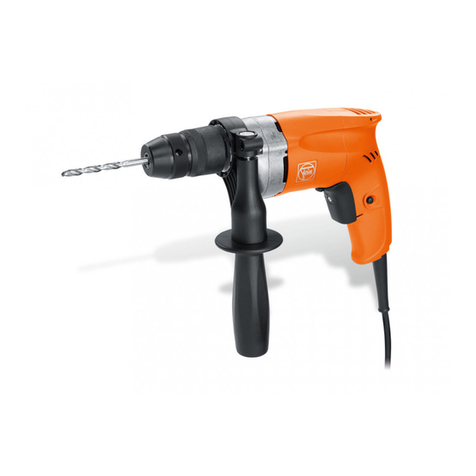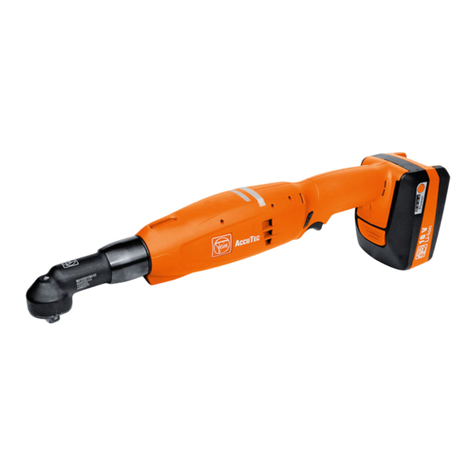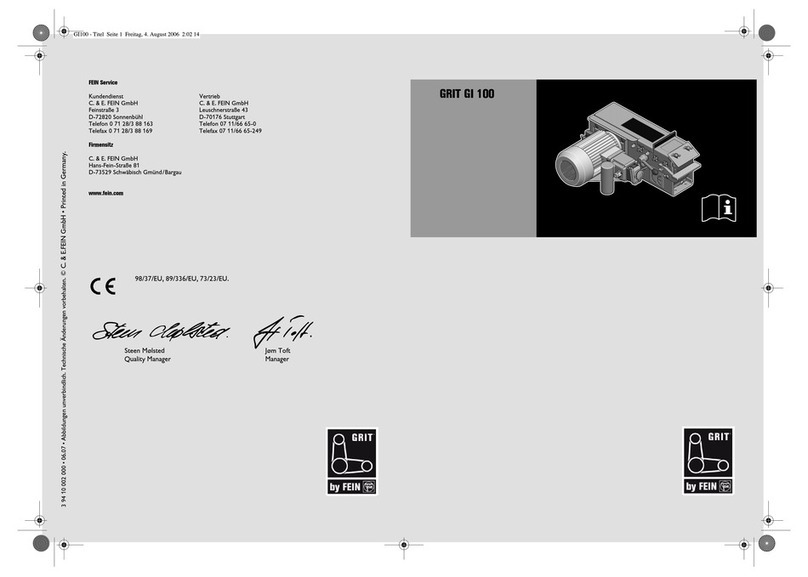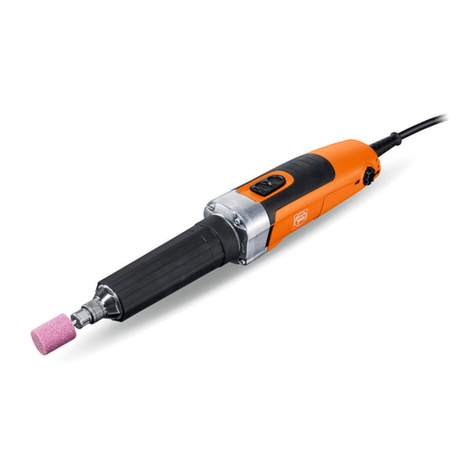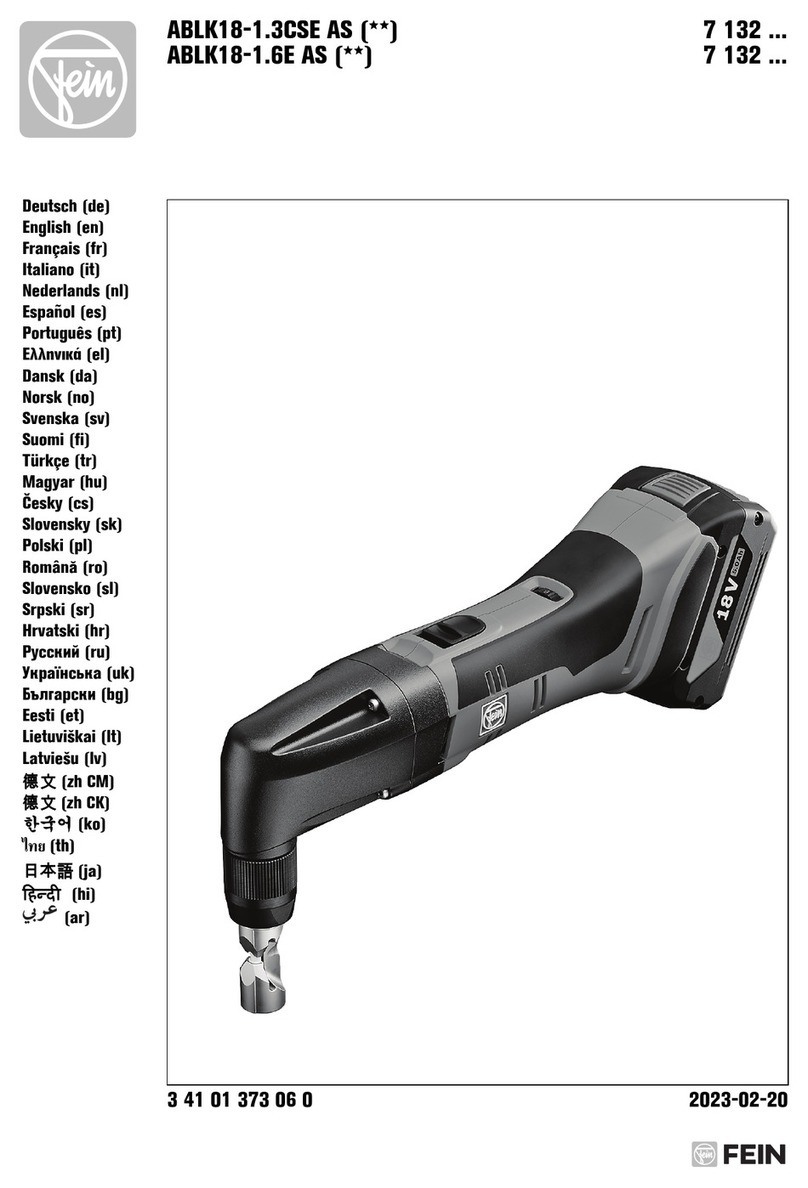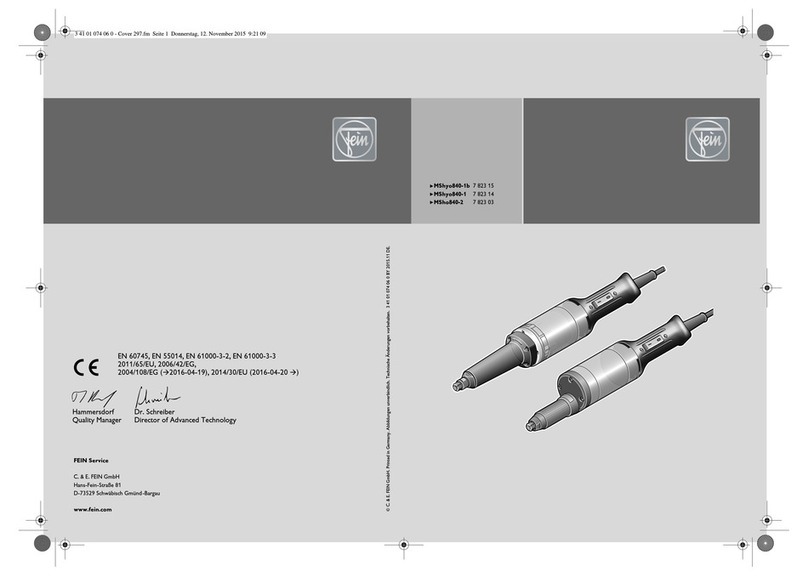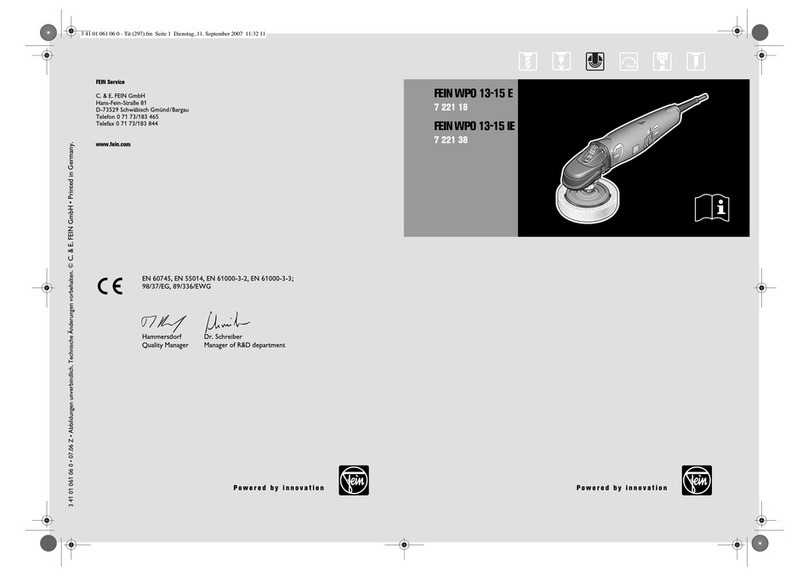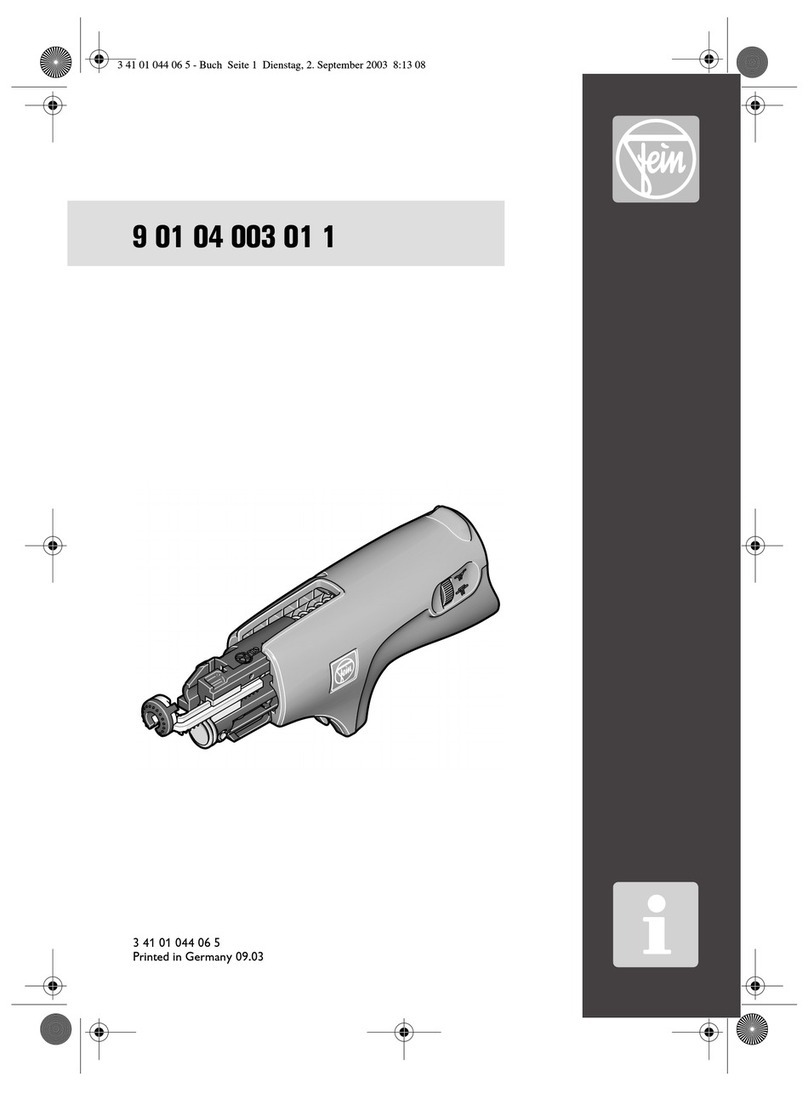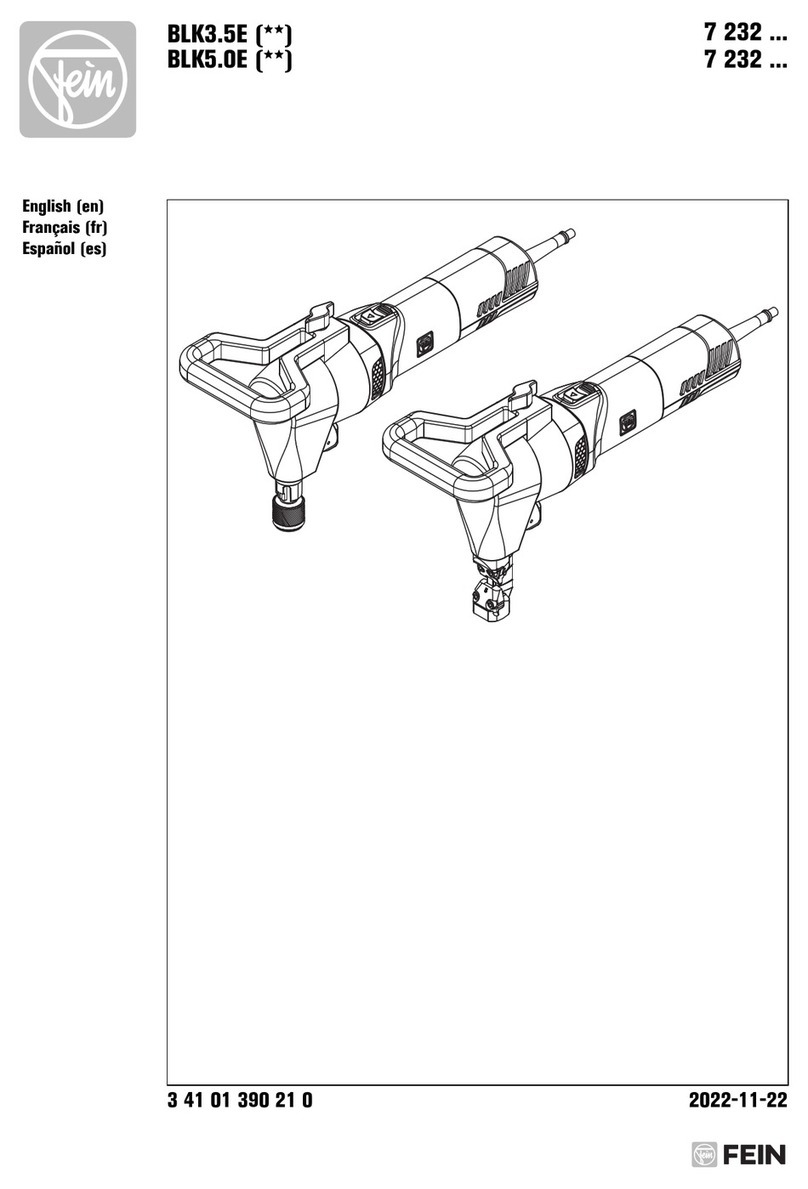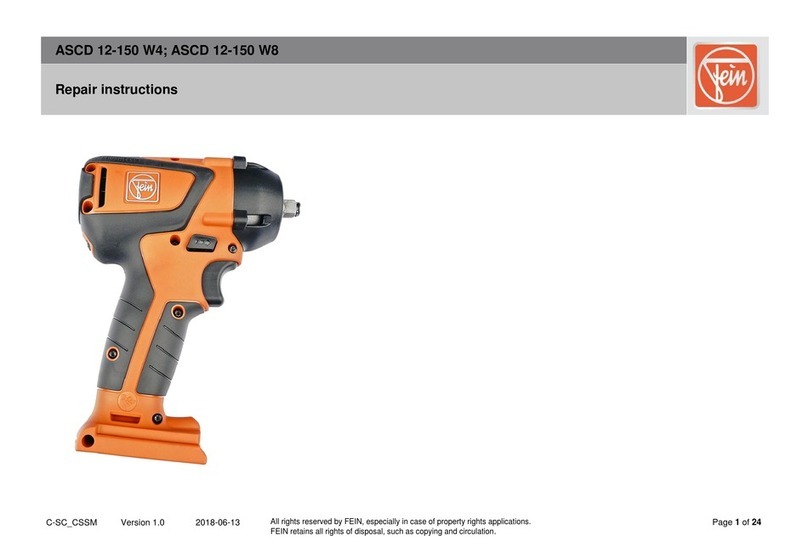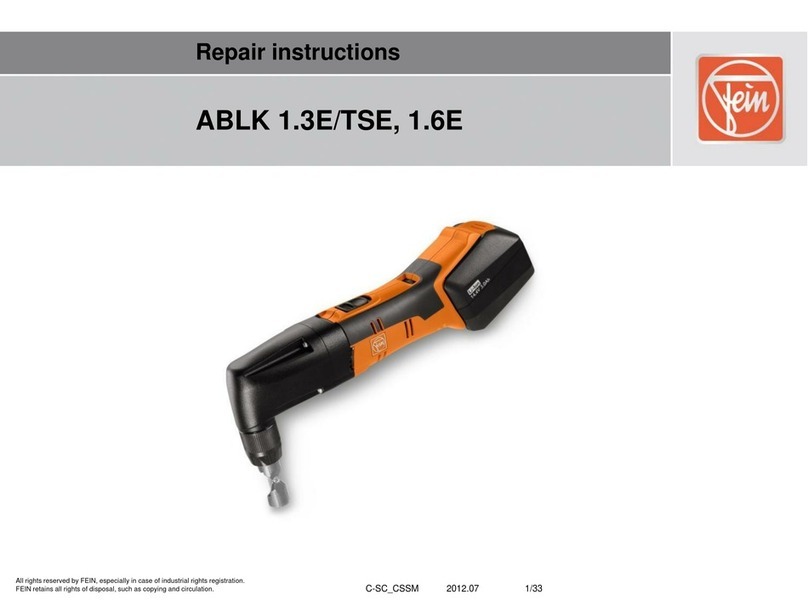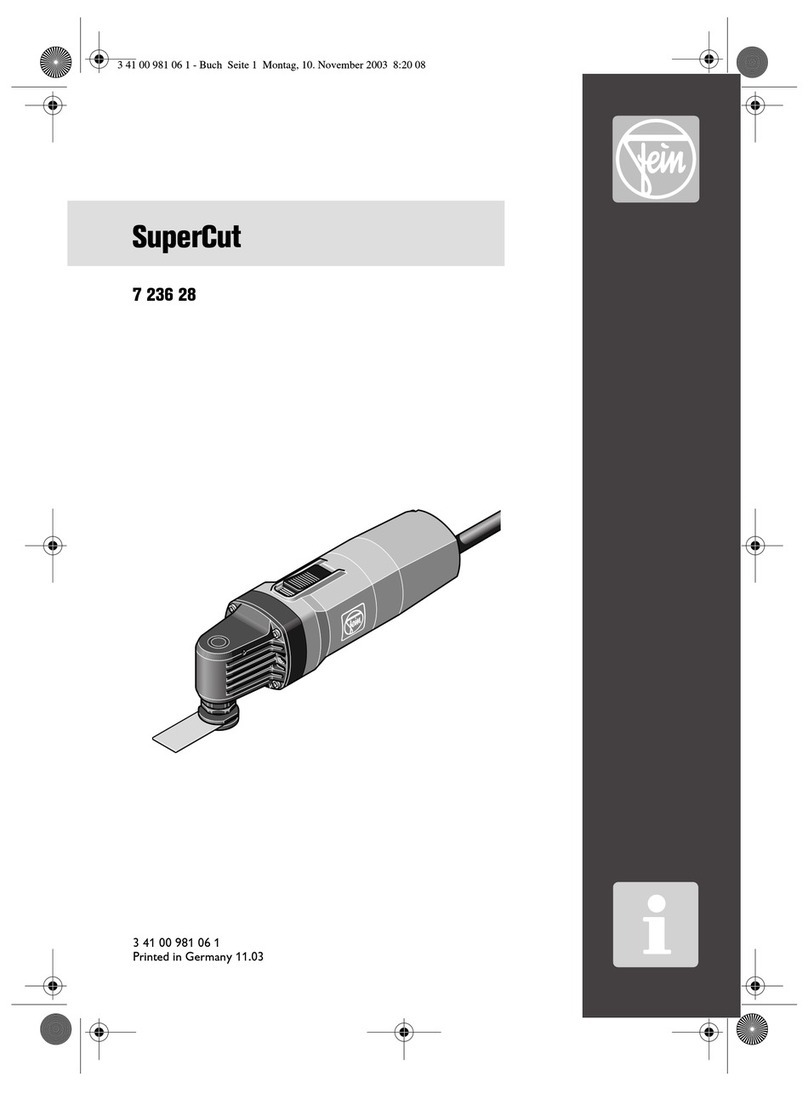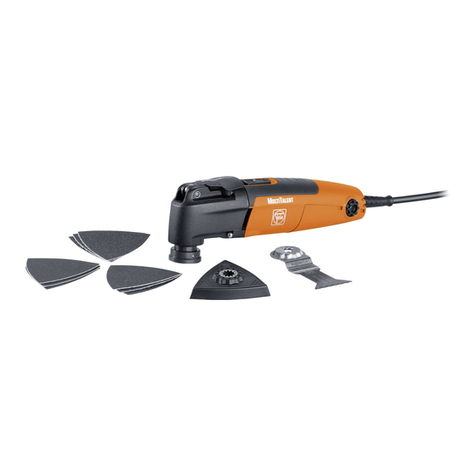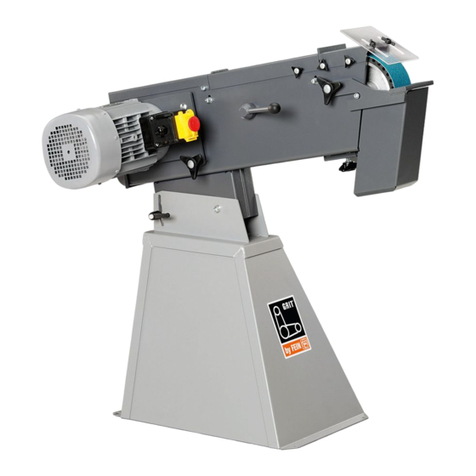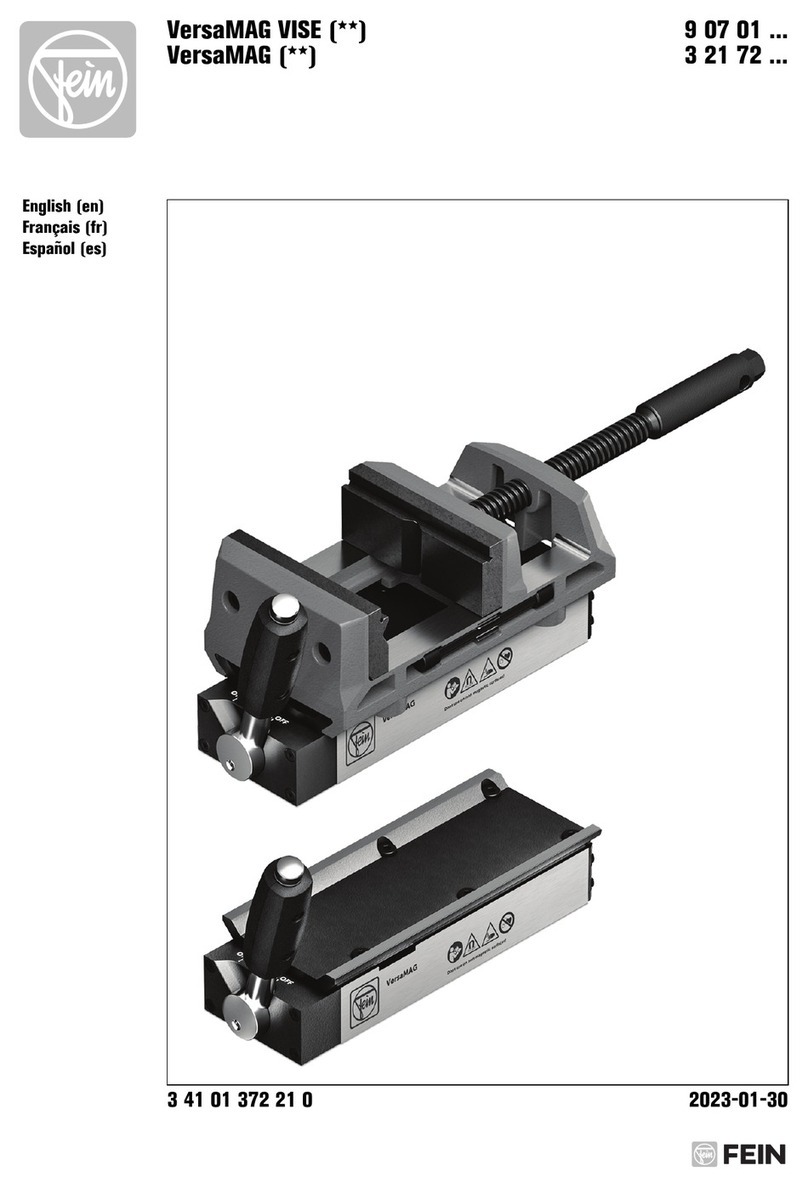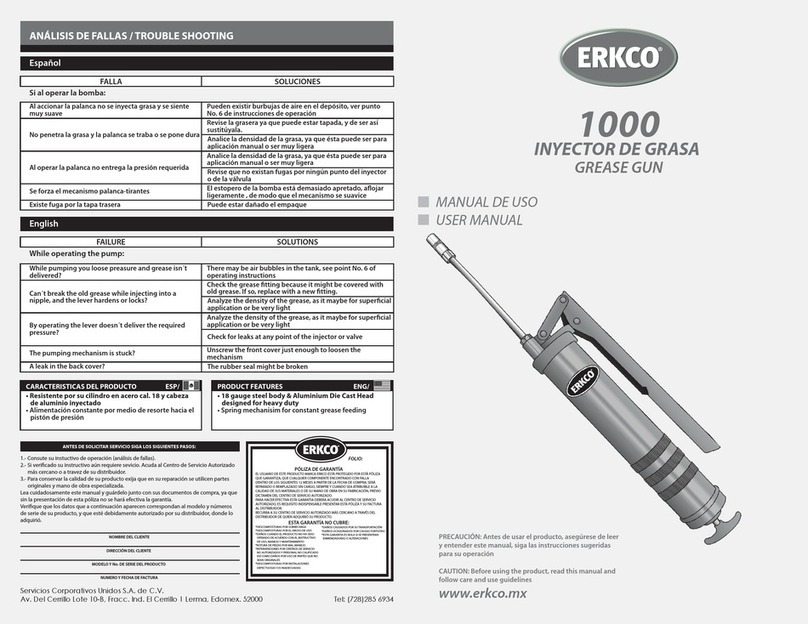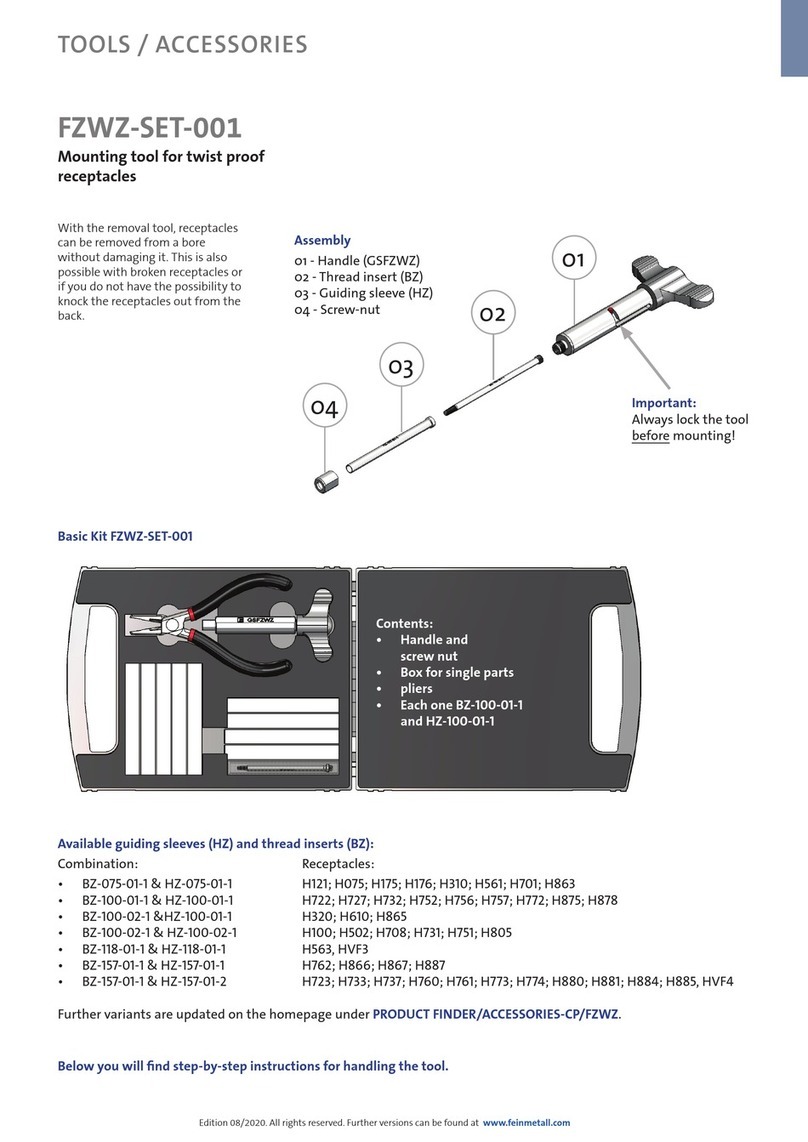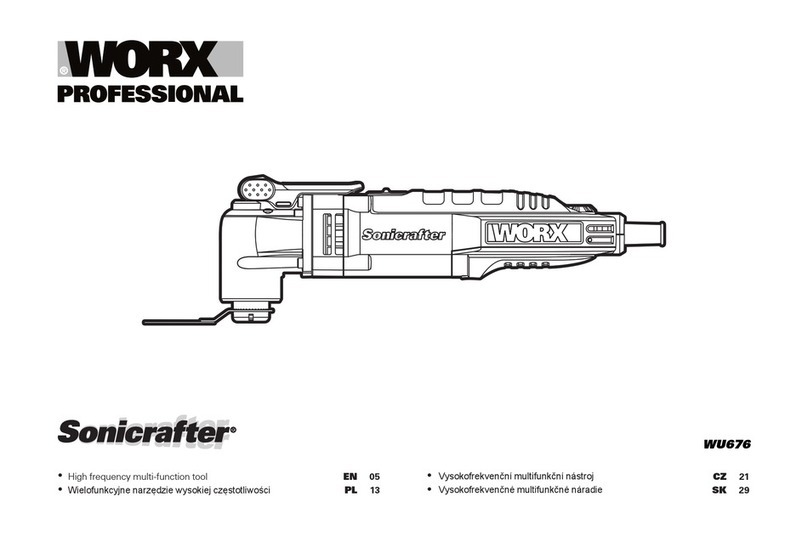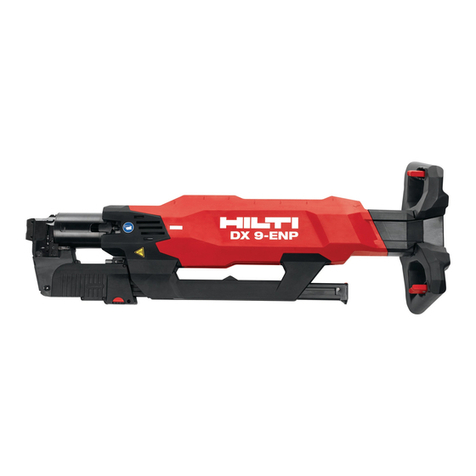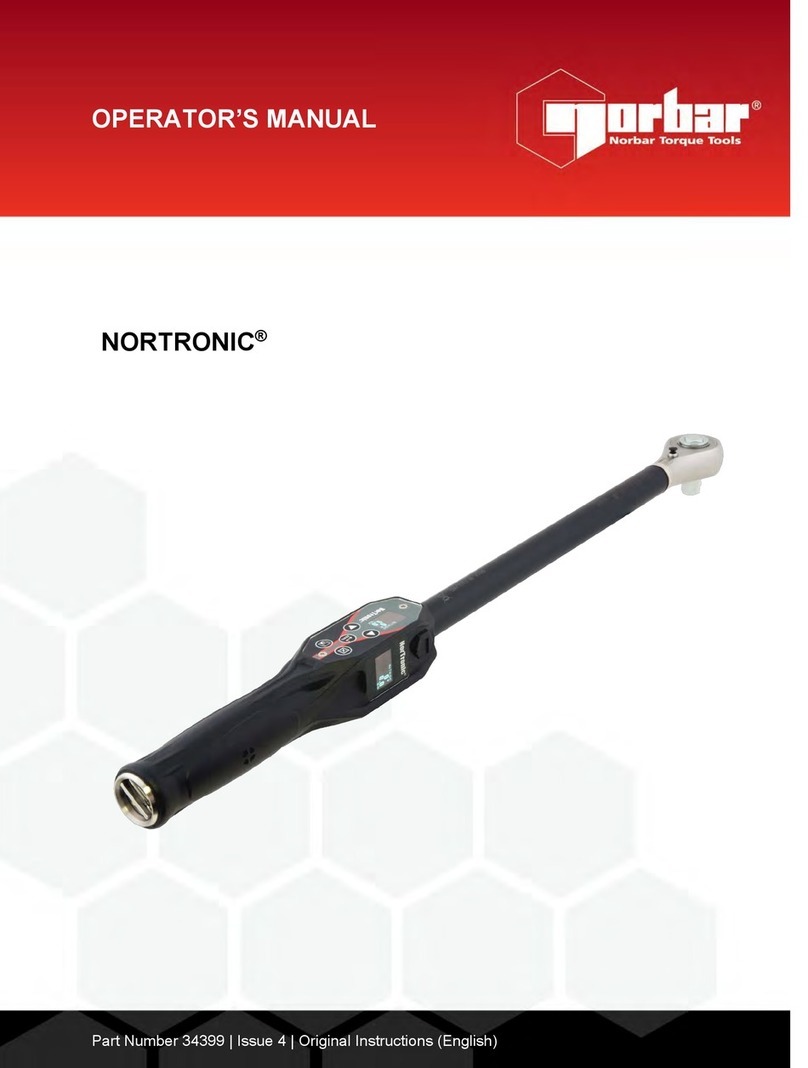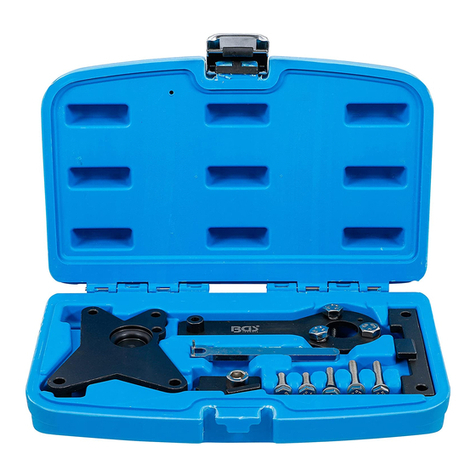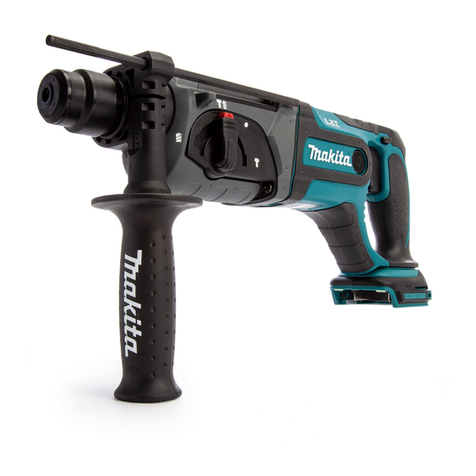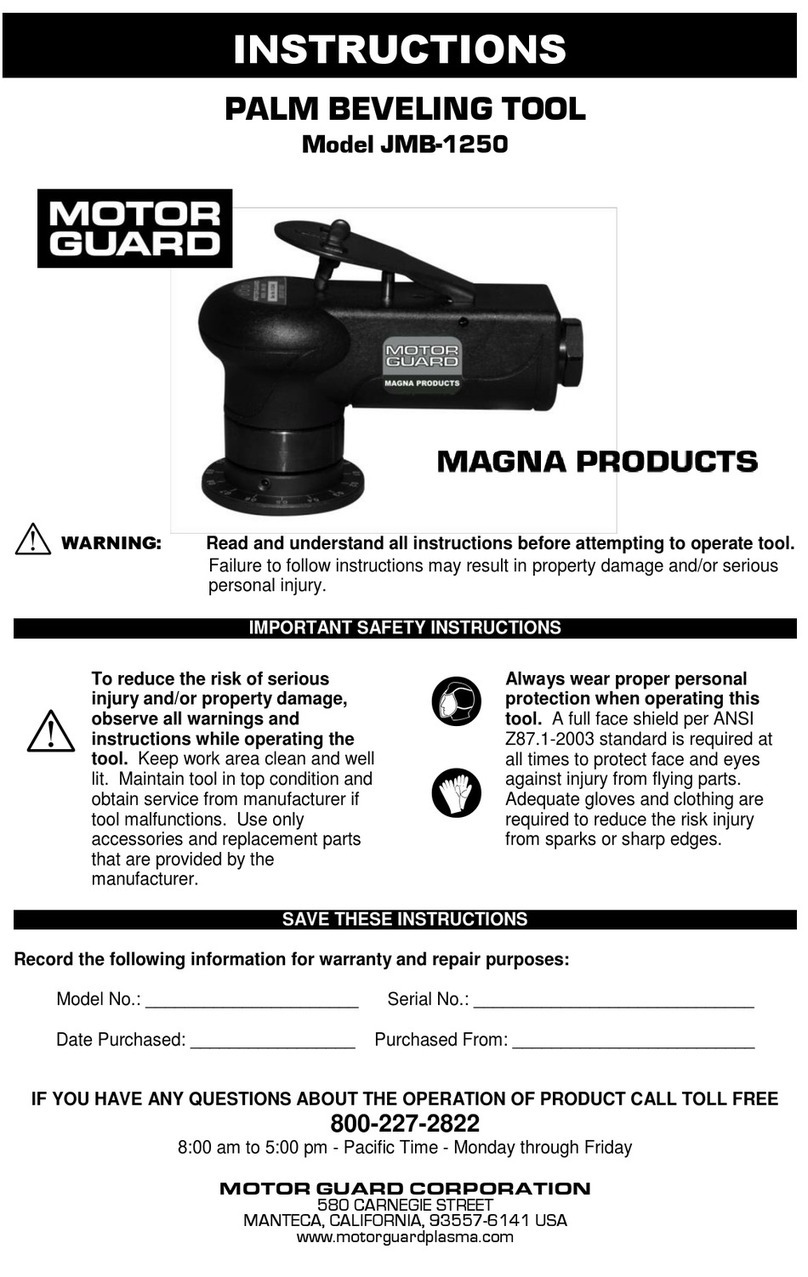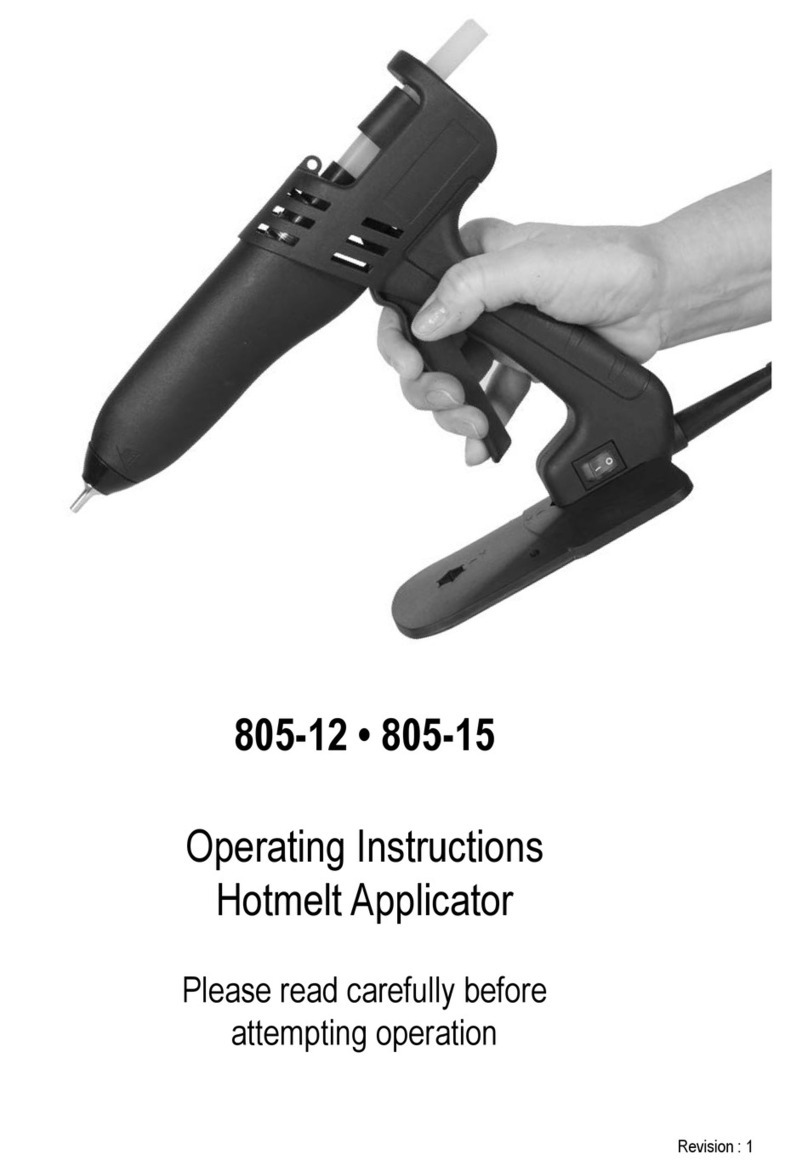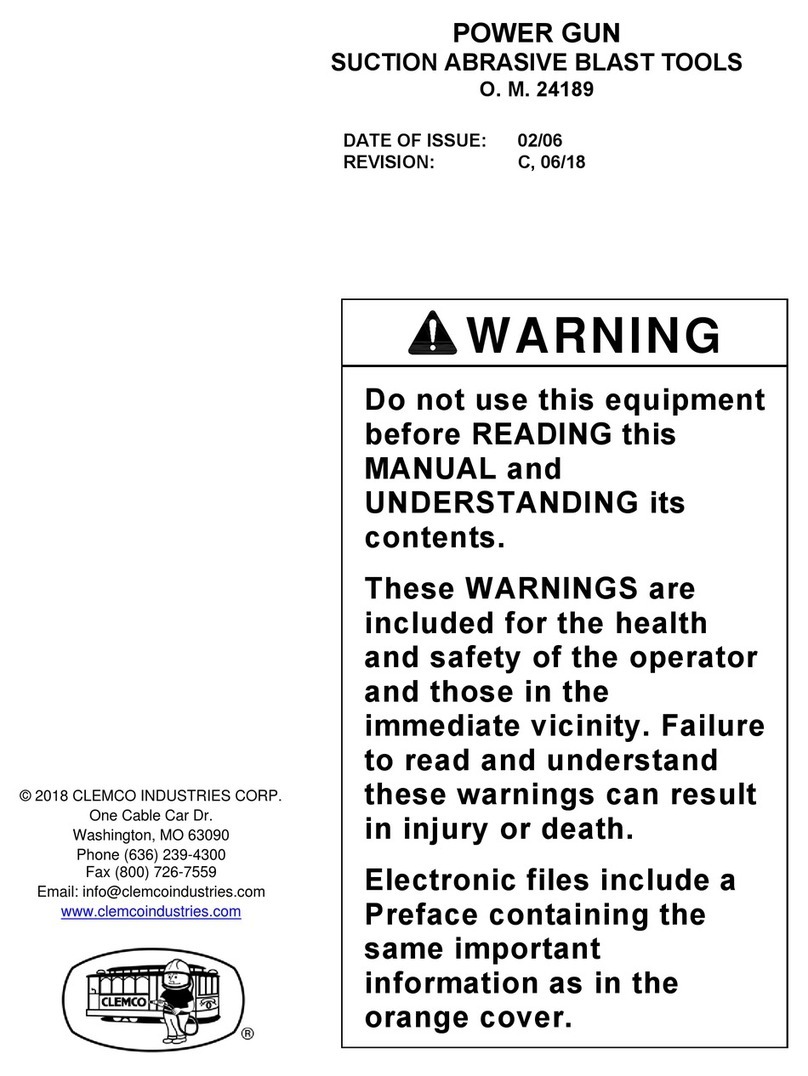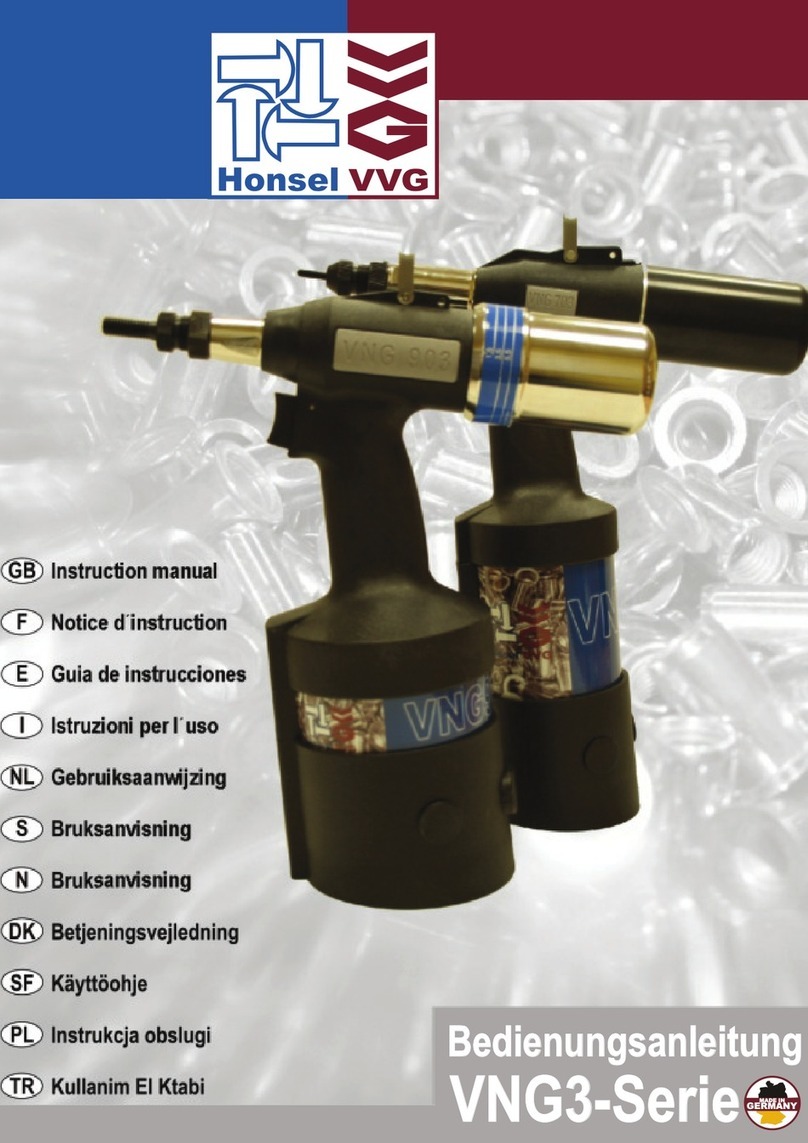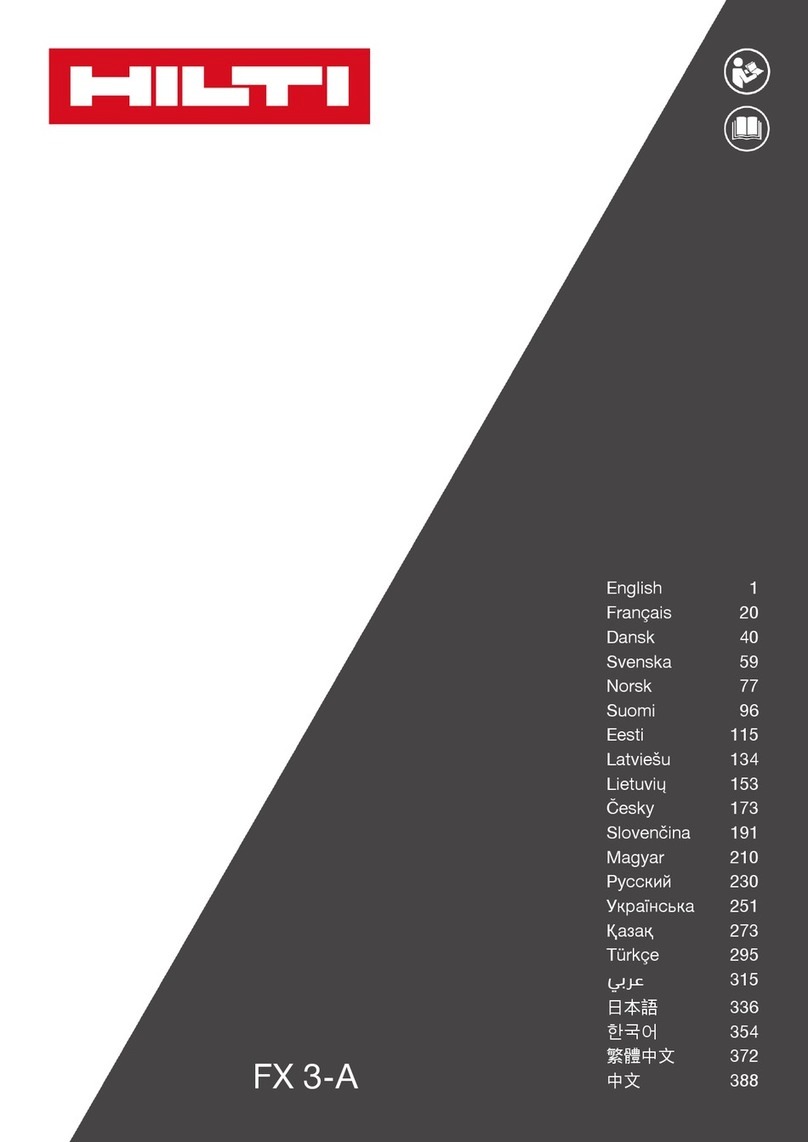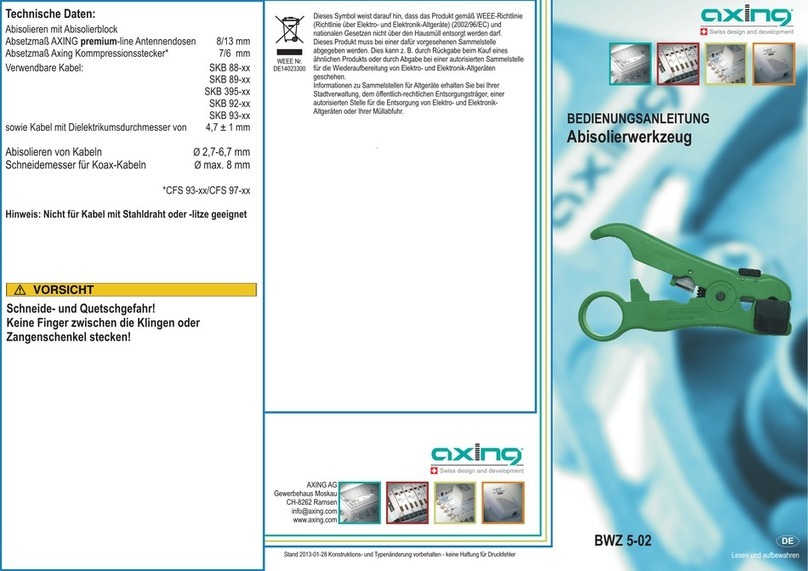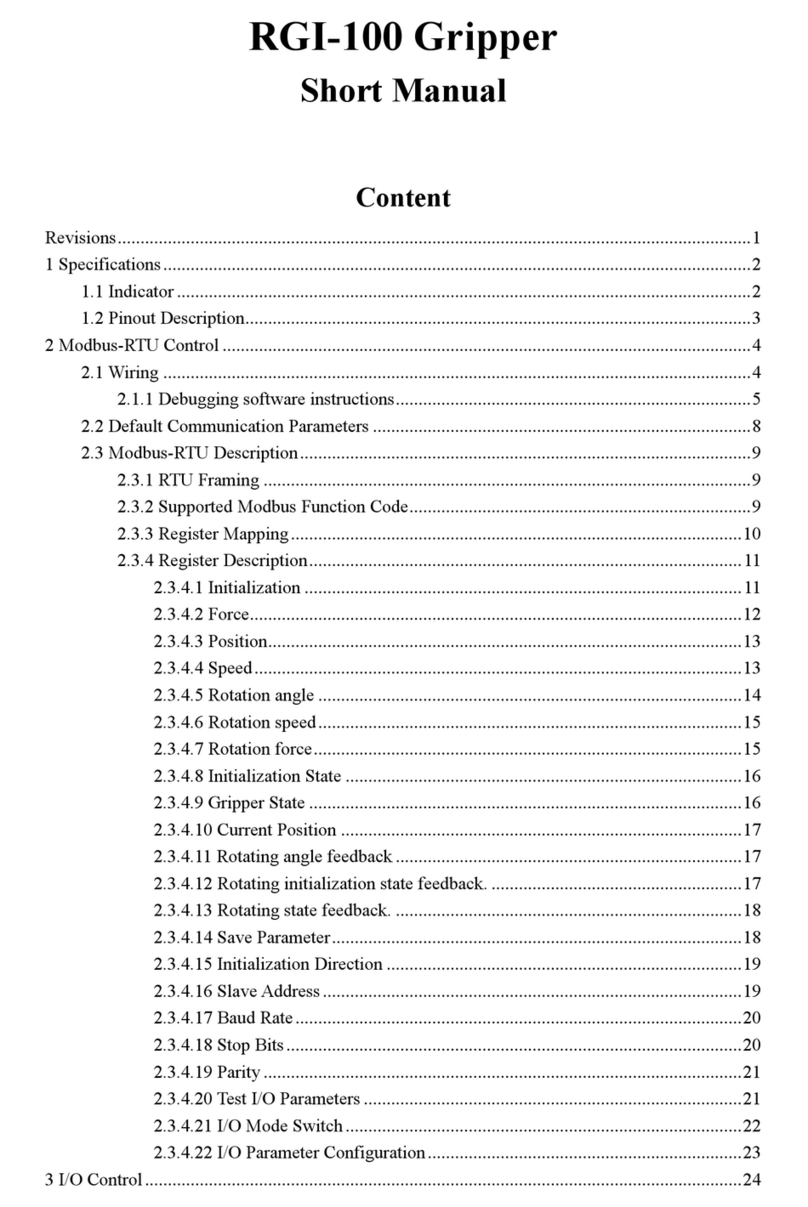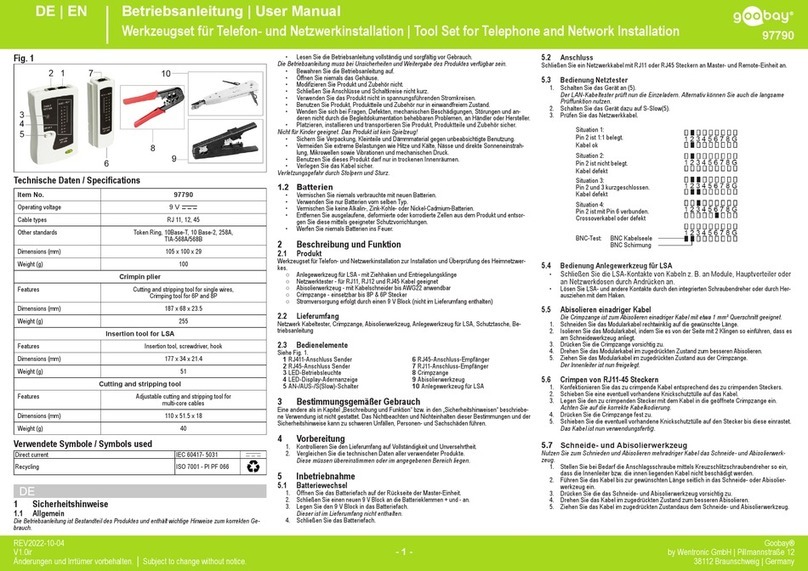
5
en
grinding belts!
Damaged grinding belts can
tear apart and be thrown from the machine
resulting in possible personal injury.
Caution! Danger of fire and explosion! When
grinding metals (e. g. aluminium or magne-
sium), dust develops that can be combustible
or explosive. Do not operate the machine in the
vicinity of combustible materials.
Sparks can
ignite such materials.
Pay attention that persons are not harmed by
sparking.
Remove combustible materials in
the direct area. Sparks develop when grinding
metals.
Never touch the running grinding belt.
Danger
of injury.
Secure the workpiece firmly.
A work piece
that is gripped tightly in a clamping device or
vice, is more secure than if held by hand.
Do not machine any material containing asbes-
tos.
Asbestos is cancerogenic.
Hold the power tool firmly.
High reaction
torque can briefly occur.
Hold power tool by insulated gripping surfaces,
when performing an operation where the cut-
ting accessory may contact hidden wiring or its
own cord.
Cutting accessory contacting a
“live” wire will make exposed metal parts of
the power tool ‘“live” and shock the opera-
tor.
Do not rivet or screw any name-plates or signs
onto the power tool.
If the insulation is dama-
ged, protection against an electric shock will
be ineffective. Adhesive labels are recommen-
ded.
Do not use accessories which are not specifi-
cally designed and recommended by the power
tool manufacturer.
Safe operation is not ensu-
red merely because an accessory fits your
power tool.
Clean the ventilation openings on the power
tool at regular intervals using non-metal tools.
The blower of the motor draws dust into the
housing. An excessive accumulation of metal-
lic dust can cause an electrical hazard.
Use a stationary extraction system, blow out
ventilation slots frequently and connect a
residual current device (RCD) on the line side.
When working metal under extreme operat-
ing conditions, it is possible for conductive
dust to settle in the interior of the power
tool. The total insulation of the power tool
can be impaired.
This double-insulated power tool is equipped
with a polarized plug (one contact is wider than
the other). The plug will only fit into the polar-
ized socket outlet in one position. Turn the plug
if it does not fit completely into the socket out-
let. If the plug still does not fit, have a qualified
electrician install a polarized socket outlet. Do
not modify or alter the plug under any circum-
stances.
Double-insulated power tools nei-
ther require a three-core power cable nor a
power connection with ground contact.
Operate the power tool only off of power sup-
plies whose voltage and frequency values cor-
respond with the values on the type plate of the
power tool.
When operating the power tool in a damp envi-
ronment, it must be connected via a ground-
fault circuit interrupter (g.f.c.i.).
Using special
rubber protective gloves and footwear
increase your own safety.
Use clamps or another practical way to secure
and support the workpiece to a stable platform.
Holding the work by hand or against your
body leaves it unstable and may lead to loss of
control.
Before mounting or replacing application tools
or accessories, pull the power plug.
This pre-
ventive safety measure rules out the danger of
injuries through accidental starting of the
power tool.
Use appropriate detectors to determine if utility
lines are hidden in the work area or call the
local utility company for assistance.
Contact
with electric lines can lead to fire and electric
shock. Damaging a gas line can lead to explo-
sion. Penetrating a water line causes property
damage or may cause an electric shock.
Do not direct the power tool against yourself,
other persons or animals.
Danger of injury
from sharp or hot application tools.
Before putting into operation, check the mains
connection and the mains plug for damage.
3 41 01 134 21 0.book Seite 5 Freitag, 15. Mai 2009 11:38 11
